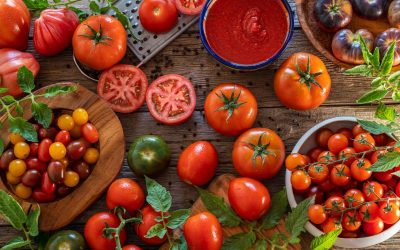
The Small Step That Changes Everything
When you salt meat early — whether it’s steak, chicken, or that big turkey waiting for the holidays — you’re harnessing simple food science to make your meal better. It may seem like such a small move, but the science behind it proves why timing matters.
I remember the first time I learned this lesson in a professional kitchen. We were prepping racks of lamb for a big dinner service, and the chef stopped me mid-stride: “Get the salt on now. Don’t wait.” Hours later, those lamb racks came out perfectly seasoned from edge to bone, and I realized this wasn’t a chef’s superstition — it was science and patience working together.

Why Salting Ahead Works
Salt draws moisture to the surface. That moisture dissolves the salt, then travels back into the meat. This is osmosis at work, seasoning more than just the outer layer. Even better, the salt doesn’t stop there — it also breaks down proteins, helping the meat hold onto its juices instead of losing them to the pan.
Think about it this way: when you wait to season until the last second, the salt only touches the exterior. Salting early allows the flavor to penetrate deep, transforming the whole bite instead of just the surface.
👉 For a deeper dive into the science, Serious Eats explains dry brining here.
The Results You’ll Notice
The result? More flavor, a better crust, and meat that stays juicy even after carving. And while this is a win for a weeknight steak, it’s even more important for the big centerpieces. For roasts and holiday birds, this one move makes the difference between “good” and “wow.”
If you’ve ever sat at a Thanksgiving table and politely chewed your way through a dry slice of turkey, you already know why this matters. Salt early, and the bird rewards you with slices that stay juicy long after the carving knife has done its work.
Dry Brine, Wet Brine, or Just Salt?
Call it a dry brine, call it salting ahead — it works the same magic on your pork roast, lamb leg, even that Thanksgiving turkey or Hanukkah brisket you’re planning. Unlike wet brines, which require buckets of salted water and fridge space you probably don’t have, salting early is fuss-free. No heavy containers, no sloshing liquid, no diluted flavor. Just salt, time, and trust.
Curious about the differences? I wrote more about spices that rule my kitchen, and salt is always the anchor.
Timing: How Far Ahead Should You Salt?
This is where most people get nervous. How far ahead is “early”? Here’s a guide I use in my own kitchen:
-
Small cuts (chicken thighs, pork chops, steaks): 1–3 hours ahead.
-
Medium roasts (lamb leg, pork loin, whole chicken): 12–24 hours ahead.
-
Large birds and brisket: 24–72 hours ahead.
The bigger the cut, the more time the salt needs to work its way in. If you’re planning a holiday meal, mark your calendar — the salt goes on days before the guests arrive.
Crispier Skin, Juicier Meat, Better Leftovers
Want crispier skin, juicier slices, better leftovers? Give it time. Because the truth is, patience in the kitchen pays dividends — and salt is proof of that.
Think of it as a gift you’re giving your future self. Leftover turkey sandwiches stay moist. Chicken reheats without drying out. Even cold slices of roast beef have more flavor.
Respecting the Ingredient
The best dishes aren’t rushed — they’re respected. Salt early, rest well, eat better. Think of it less as a chore and more as giving your ingredients the head start they deserve.
I once made the mistake of skipping this step for a catered event. With a tight schedule, I seasoned late. The chicken looked beautiful coming off the grill, but once sliced, it told another story: pale, bland meat beneath the surface. Lesson learned. Since then, I never skip the early salt.
Practice Before the Holidays
Don’t wait till Thanksgiving or Hanukkah to practice — next time you pick up pork chops or chicken thighs, salt them a few hours early. Let the salt do its quiet magic. Small step, big payoff. By the time the holidays roll around, you’ll be moving with the confidence of someone who already knows the outcome.
If you’re planning ahead for your holiday table, check out my notes on dishes that taste better the next day. Salt belongs on that list too.
Come hang out with me on Instagram @mrchefalexishernandez — I’m always sharing how and why this works, especially this time of year. And if you’ve got a favorite salting-ahead success story, share it with me there.









